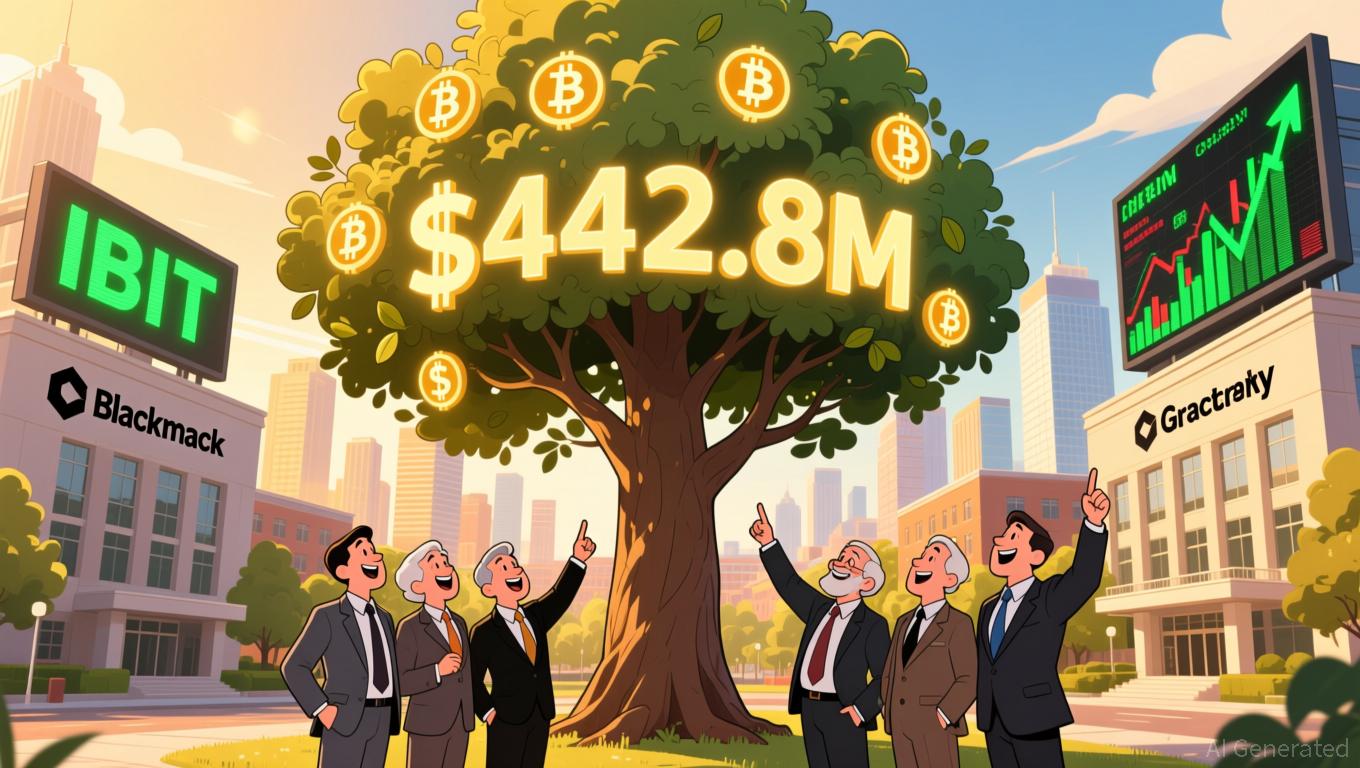Zcash Halving: Exploring the Impact of Supply Dynamics and Market Sentiment on the Altcoin Ecosystem
- Zcash (ZEC) underwent its 2025 halving, cutting block rewards by 50% to 1.5625 ZEC, triggering a 20% price surge and renewed focus on scarcity-driven value. - The event reduced annual inflation to 4%, boosted institutional adoption (e.g., $137M Grayscale Trust), and highlighted Zcash's privacy-driven utility with 27–28% shielded transactions. - ZEC outperformed Bitcoin in Q4 2025, peaking at $712, as institutional demand (e.g., $50M Cypherpunk purchase) and privacy tools like Zashi wallet drove adoption
Supply Dynamics: Ushering in a Scarcity Era
Zcash’s halving represents a crucial turning point for its supply structure. With the reduction in block rewards,
The move from proof-of-work (PoW) to proof-of-stake (PoS) in 2025

Investor Outlook: From Doubt to Institutional Acceptance
The response from the market to Zcash’s halving has been far from straightforward. Initially, there was skepticism, but
Cypherpunk Technologies’
Risks and Regulatory Ambiguity
Despite the strong
Conclusion: Is Privacy the Next Frontier?
Zcash’s halving has highlighted how supply-side changes can influence both investor attitudes and institutional strategies. As the market adjusts to lower issuance and advanced privacy features, Zcash’s price movement—distinct from Bitcoin—signals a shift in how utility-focused assets are valued. Although regulatory issues persist, the increasing institutional adoption of Zcash and its role as a counter-cyclical asset make it a noteworthy example in the ongoing development of the altcoin market.
Disclaimer: The content of this article solely reflects the author's opinion and does not represent the platform in any capacity. This article is not intended to serve as a reference for making investment decisions.
You may also like
Bitcoin Updates: Harvard’s Investment in Bitcoin Challenges Previous Doubts as More Institutions Join
- Harvard University tripled its Bitcoin stake in IBIT, now holding $442.8M in the ETF, making it the fund's 16th-largest holder. - The move defies past skepticism from Harvard economists like Kenneth Rogoff, who once predicted Bitcoin would fall to "$100 rather than $100,000". - Institutional adoption grows as Abu Dhabi's Al Warda and Emory University also boosted Bitcoin ETF holdings, despite recent market volatility and outflows. - Harvard's 0.6% Bitcoin allocation in its $57B portfolio highlights crypt

Bitcoin Updates: Bitcoin Drops, Harvard's $364 Million ETF Investment Shows Institutional Commitment
- Harvard University increased its BlackRock IBIT Bitcoin ETF stake by 257% to $364.4M, becoming a top institutional holder. - The $50B endowment also doubled gold ETF holdings, treating both assets as inflation hedges amid macroeconomic uncertainty. - Emory and Abu Dhabi's Al Warda similarly boosted crypto-linked ETFs, signaling institutional confidence in regulated digital assets. - Analysts highlight Harvard's ETF adoption as rare validation, with U.S. spot Bitcoin ETFs attracting $60.8B in inflows sinc

Astar 2.0's Tactical Rollout and Its Impact on DeFi Advancements
- Astar 2.0 introduces institutional-grade DeFi architecture with 6-second block times and 150,000 TPS via Polkadot's async protocol. - Cross-chain interoperability with LayerZero/CCIP enables seamless asset transfers across Ethereum , BSC, and Polkadot ecosystems. - Strategic partnerships with Mizuho Bank, Casio, and Japan Airlines demonstrate real-world applications in CBDCs, logistics, and digital rewards. - $3.16M institutional ASTR purchase and 20% QoQ wallet growth highlight growing confidence in its

TWT's Updated Tokenomics Structure and Its Impact on the Market: Exploring Investment Prospects in the Latest Tokenomics Innovations
- TWT's tokenomics remain opaque, contrasting with transparent reforms by Aster DEX and structured supply management by Monad. - Institutional adoption rises via privacy-focused tokens like Franklin Templeton's Benji and yield-driven JPM Coin, reshaping crypto investment. - Effective tokenomics now prioritize transparency, supply locks, and institutional alignment to build trust and mitigate volatility risks. - TWT faces challenges in differentiation without clear disclosures, risking obsolescence amid reg
